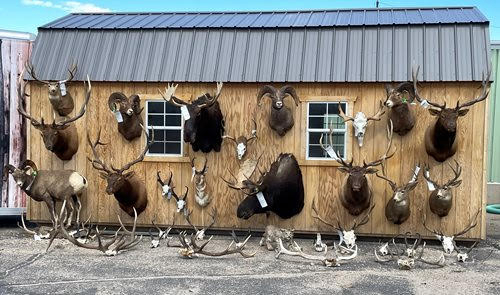Food Plots and Habitat Plantings for Game Birds
 One aspect of wildlife management that is growing rapidly is the restoration of native habitat and growing crops with game birds like quail and turkey in mind. I am of the opinion that loss of habitat may be the number one factor in a list of many reasons for the steady decline in quail numbers over the last several decades. Turkey on the other hand, have had remarkable success and have a population that is abundant across most of the U.S.
One aspect of wildlife management that is growing rapidly is the restoration of native habitat and growing crops with game birds like quail and turkey in mind. I am of the opinion that loss of habitat may be the number one factor in a list of many reasons for the steady decline in quail numbers over the last several decades. Turkey on the other hand, have had remarkable success and have a population that is abundant across most of the U.S.
Whether you are trying to attract turkeys and keep them on your property or attempting to provide food and cover for a couple coveys of quail, there are several easy to plant annual crops that can be very beneficial. Millets, sorghum, and sunflowers are all easy to plant warm season annuals that can be planted as stand-alone crops or as a blend like BioLogic’s WhistleBack. A lot of people want to plant something that is providing food within a couple weeks like they do for deer, but it really doesn’t work that way for birds. For game birds we are really trying to create food, cover, and brood habitat that they seek out. Giving the birds all they need through the changing seasons will keep them at home and discourage them from wandering to neighboring properties.
Warm season annuals such as the previous mentioned millets, sorghum, etc, need 70-100 days of growth to mature and produce seed. As the plants mature and dry up in the late summer and into the fall, they will naturally begin to drop seeds. The maturity rate is dependent on what varieties are used and of course weather plays a factor. These warm season annuals are relatively easy to grow and can be planted by broadcasting onto a prepared seed bed or by using a no-till drill or planter. I prefer a no-till drill for bird plots for a couple of reasons. The rows make it easy for smaller game birds like quail to navigate through, drills also disturb the soil considerably less than using a disc or tiller and as a result you will usually have less weed problems. If using traditional planting methods, I would suggest spraying the area to be planted a week to ten days ahead of planting with a non-selective herbicide such as Round-Up to kill all existing vegetation. Ground to be planted can then be disced or tilled and then cultipacked or rolled to create a firm seed bed. Seed can then be broadcast and lightly dragged in or rolled back over with a cultipacker. A 6.0-7.0 pH is needed for optimum growth and seed production; however, millets, sorghums, and sunflowers are fairly tolerant of acidic soils, allowing you to plant for your birds in areas with less than ideal soil conditions. Fertilizer recommendations for would be to use 13-13-13 at around 300lb per acre or an equivalent. All the seed varieties in this blend are nitrogen lovers and it would benefit growth and seed production to implement a secondary nitrogen application 4-6 weeks after germination.
A more long term way to provide the life cycle needs and improve habitat for birds is by using native warm season grasses and plants. A great blend is Mossy Oak Nativ Nurseries Bedding Blend that contains Big Bluestem, Indian Grass, Maximillian Sunflower, Switch Grass, New England Aster, Virginia Wild Rye, and Partridge Pea. These native grasses and plants not only provide great nesting cover and feeding areas but also are very attractive to insects which are crucial to young birds. The bunch grasses provide open areas on the ground that make it easy for young birds to traverse.
It doesn’t take large acreage areas to plant some areas for your birds to be effective. Strips along the sides of roads, perimeters of large food plots, clearings in the woods, all make suitable locations to plant for your birds. Another big upside to planting game bird habitat is almost all other forms of wildlife benefit from it. I have found whitetail love to use them for fawning areas and many small critters like rabbits really like to use it as well.
If you want to take your wildlife management to the next level, consider planting some areas specifically for your birds and improve your properties overall diversity. Even though you may only have an occasional covey of quail currently, there is no better way to help them multiply than by creating the food, cover, and nesting areas they are missing.
Would you like to learn more about improving your hunting and get discounts on the products you need? Learn from the experts by joining the new Mossy Oak GameKeepers Club at www.gamekeepersclub.com. Or call 662-495-9292.






